Vientiane

One of the top tourist attractions in Laos is the capital city of Vientiane. With its unique, ancient architecture deeply influenced by Buddhism, it creates a quiet, peaceful and tranquil capital. This reflects the distinct identity of the people of the Land of a Million Elephants. Vientiane offers visitors a unique experience, unlike other bustling cities, bringing a sense of ancient charm and history.
Vientiane, largest city and the capital of Laos, situated on a plain just northeast of the Mekong River. The city’s central river port location in a country relying heavily on rivers for transportation and its surrounding hinterland of intensive rice cultivation have made Vientiane the major economic center of Laos.
With its favorable location, this capital is a place of strong development in both economy and tourism.

Vientiane, largest city and the capital of Laos (Cre: laoicontravelintl)
Vientiane was formerly a Khmer settlement centered around a Hindu temple. In the 11th-12th centuries, Lao and Thai armies invaded Southeast Asia, drove out the Khmer, and occupied the central region of Laos, establishing the Lan Xang Kingdom in 1354. However, Vientiane was not the capital at that time.
Over the centuries, the capital Vientiane was repeatedly captured by forces from Central Laos, Northeastern Thailand, and Siam, leaving the city almost completely destroyed. It was not until 1893, when the French established a protectorate over Laos, that Vientiane began to be restored and became the capital of Laos in 1899.
Since 1989, it has been separated into a special administrative region and Vientiane Province. Today, Vientiane holds many historical memories and gives back impressive memories to visitors.

Vientiane was formerly a Khmer settlement centered around a Hindu temple (Cre: Embassy World)
Read more: Laos tours 7 days
Vientiane embodies the unique characteristics of a country where the majority of the population practices Buddhism, which is also a hallmark of Laos. Throughout the capital, there are numerous temples, large and small, with intricate architecture that reflects the respect for the nation's beliefs.
Not noisy or bustling, this capital offers a peaceful atmosphere typical of Laos with a relaxed and unhurried pace of life. In addition, it features many famous tourist spots that attract numerous visitors each year.

It features many famous tourist spots that attract numerous visitors each year (Cre: Laos Road)
Located in a prime position and designated as the capital of the country, traveling to Vientiane is very convenient. You can fly to Vientiane as it has Wattay Airport with both domestic and international terminals, making it easy to travel within the country or from abroad. Alternatively, you can take a bus to Vientiane if you are coming from neighboring countries.
To get around the capital, you can easily take a tuk-tuk, the most popular means of transport in Laos. In addition, motorbikes, cars, taxis and buses are also available to help you get around here.
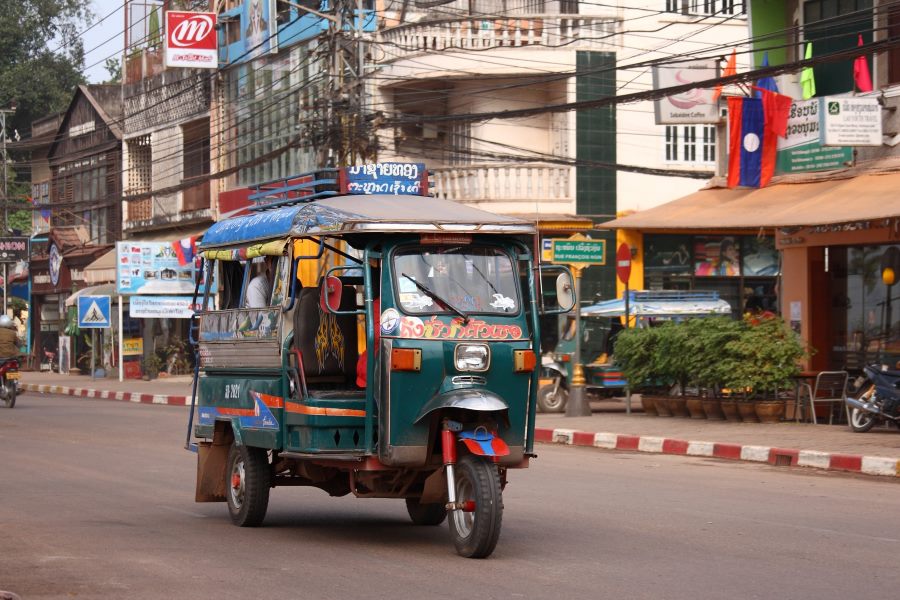
You can easily catch a tuk-tuk (Cre: Wikimedia Commons)
Vientiane has a tropical monsoon climate, with two distinct seasons: the rainy season and the dry season. The rainy season lasts from May to November, during which time it is quite hot and often rainy, making it not ideal for travel to Vientiane. The dry season lasts from December to April, with average temperatures ranging from 15 to 30 degrees Celsius. This is considered the best time for sightseeing and travel in Vientiane.
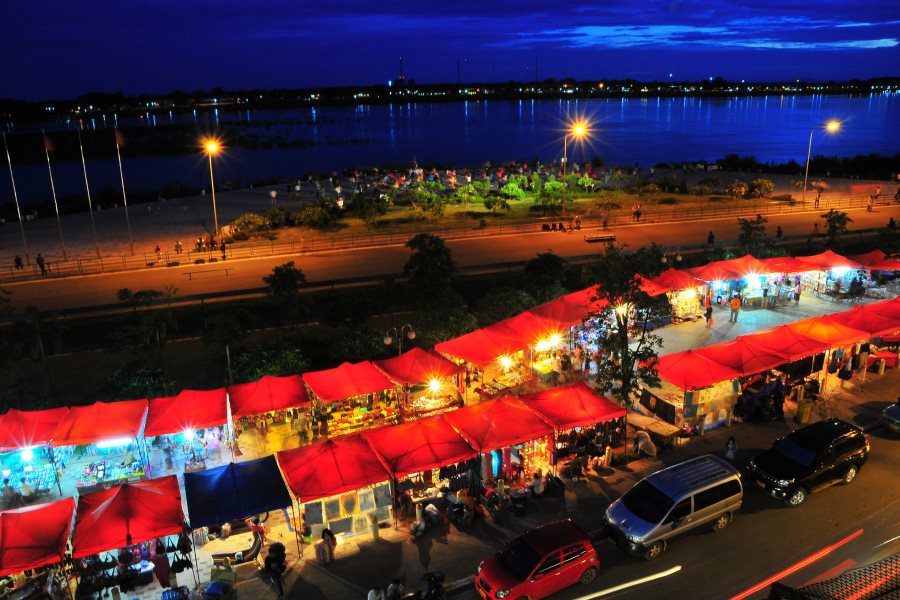
The climate in Vientiane falls within the tropical monsoon region (Cre: Discover Laos)
Patuxai Monument, also known as Anou Savary, is one of the most famous landmarks in Vientiane and was designed to resemble the Arc de Triomphe in Paris.
Patuxai is 55 meters high, with four sides, each 24 meters wide. The monument has seven tower levels and two additional levels connected by an internal spiral staircase. The building features typical Lao architectural elements, with carvings of Hindu deities.
The monument is part of the larger Patuxai Park, making it a great place to visit if you want to take a walk and observe life in the capital.

Patuxai Monument, also known as Anou Savary (Cre: manifatravel.com)
The Great Pha That Luang is a national symbol of Laos, representing both Buddhism and national sovereignty. Legend has it that a part of the Buddha's sternum is buried here.
Pha That Luang is located at the end of Lang Xang Avenue and is recognized as a World Heritage site. The image of That Luang is featured on the currency and national emblem of the Lao People's Democratic Republic.
Pha That Luang, also known as the Great Stupa of Vientiane, is considered the holiest Buddhist temple and one of the largest and most beautiful places in Laos.
In November, visitors can join the Boun That Luang festival, a three-day event that is one of the biggest festivals in Vientiane.
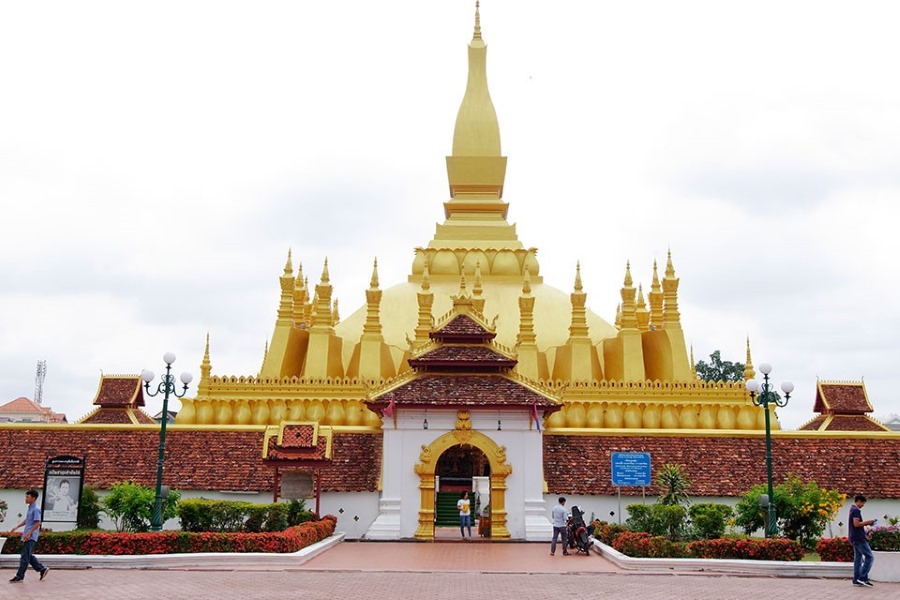
The Great Pha That Luang is a national symbol of Laos (Cre: Indochina Voyages)
The temple was built in 1818 by King Chao Anou, located right on Setthathirath Road, near Lane Xang Avenue. The temple was built by the king in Siamese Buddhist architecture with a corridor decorated with more than 2000 unique Buddha images. The Buddha statues are made of many different materials from bronze, precious woods, ceramics, gold-plated or silver.
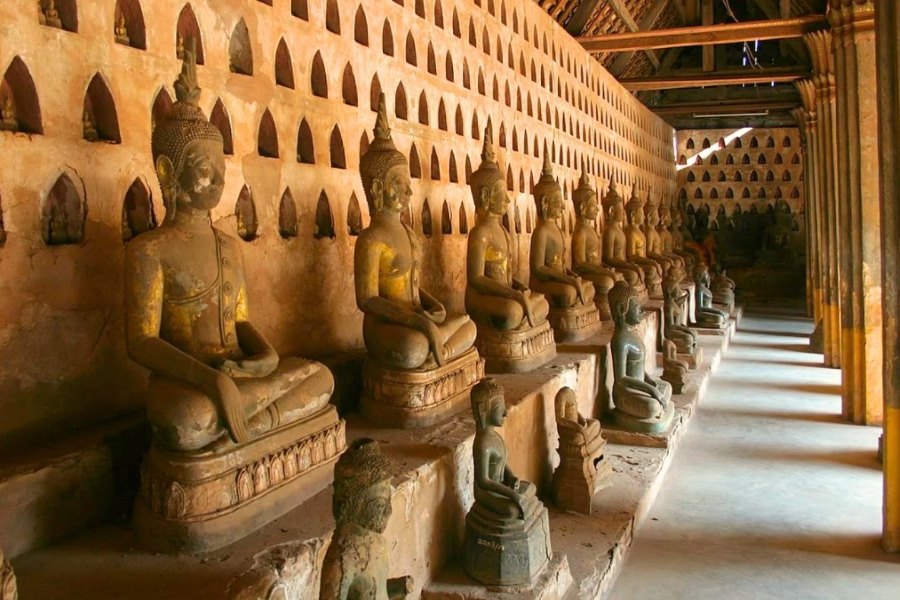
The temple was built in 1818 by King Chao Anou (Cre: Best Price Travel)
The Buddhist Park, also known as Xieng Khuan, is located about 25 kilometers from the center of Vientiane. It is a riverside park with more than 200 concrete statues of Buddha and Hindu deities.
Among the more than 200 statues, large and small, the most prominent is the giant Buddha statue measuring 40 meters long. The park also includes statues of people, gods, animals and demons. To get to the park, you should take a tuk-tuk or bus number 45.

The Buddhist Park, also known as Xieng Khuan (Cre: The Travel Leaf)
Lao people in general, and the people of the capital in particular, are very sociable, friendly, and approachable. Many tourists find that the welcoming nature and friendliness of the locals make their visit enjoyable.
In Vientiane, you can easily find a place to enjoy delicious food. From local dishes to Western cuisine, there is a variety of dishes to please every palate. You can experience typical Lao street food such as grilled meat, sausages and papaya salad, or dine at high-class restaurants with an elegant and peaceful atmosphere. Experience the true essence of Vientiane and awaken all your senses.
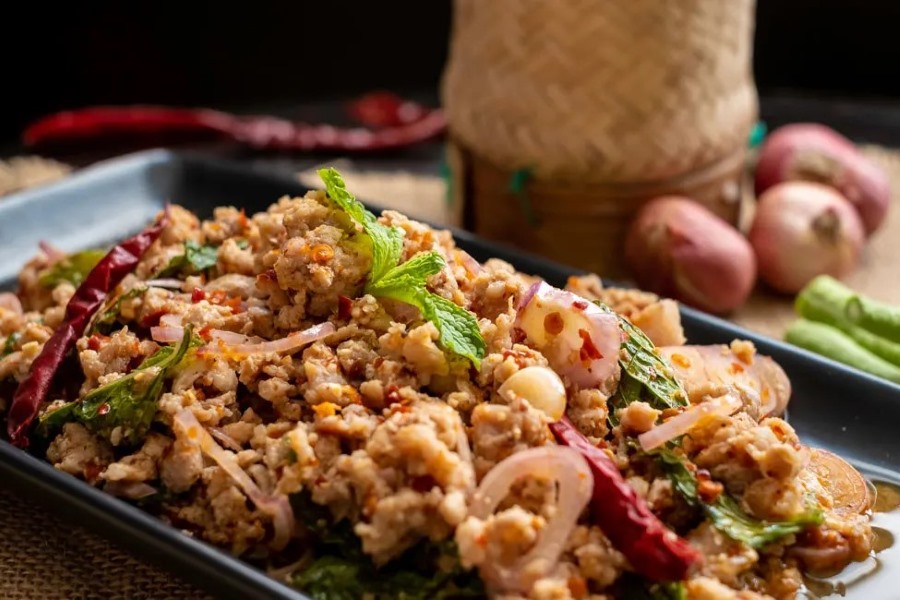
From local dishes to Western cuisine, there is a variety of dishes to please every palate (Cre: Rainforest Cruises)
That Luang Festival, also known as Boun That Luang, is one of the most important and celebrated festivals in Laos, especially in Vientiane. The festival usually takes place in November and lasts for about three days.
It is a festival to honor Pha That Luang, the Great Stupa, a major Buddhist monument and national symbol of Laos. The festival celebrates both the religious significance of the stupa and the cultural heritage of the Lao people.
The festival lasts for three days and includes various activities such as traditional dances, religious ceremonies, parades and fireworks. Pilgrims and tourists from all over Laos and beyond come to Vientiane to participate in the festival and pay their respects at the stupa.
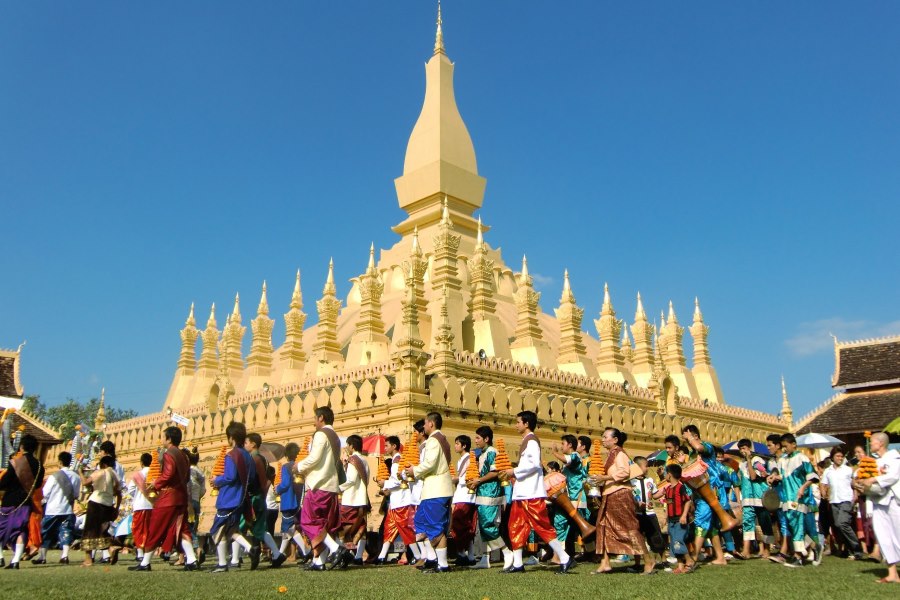
That Luang Festival is one of the most important festivals in Laos (Cre: Laos Simply Beautiful)
In addition to the Pha That Luang Festival, the capital of Laos hosts many other major traditional festivals such as the Lao New Year, the Water Splashing Festival, and boat races.
Maintaining traditional festivals is a way to preserve the ethnic identity and promote it to the international community, as Vientiane is a densely populated city and attracts many tourists.
The diverse festivals and numerous exciting activities will give you a different perspective on Laos.
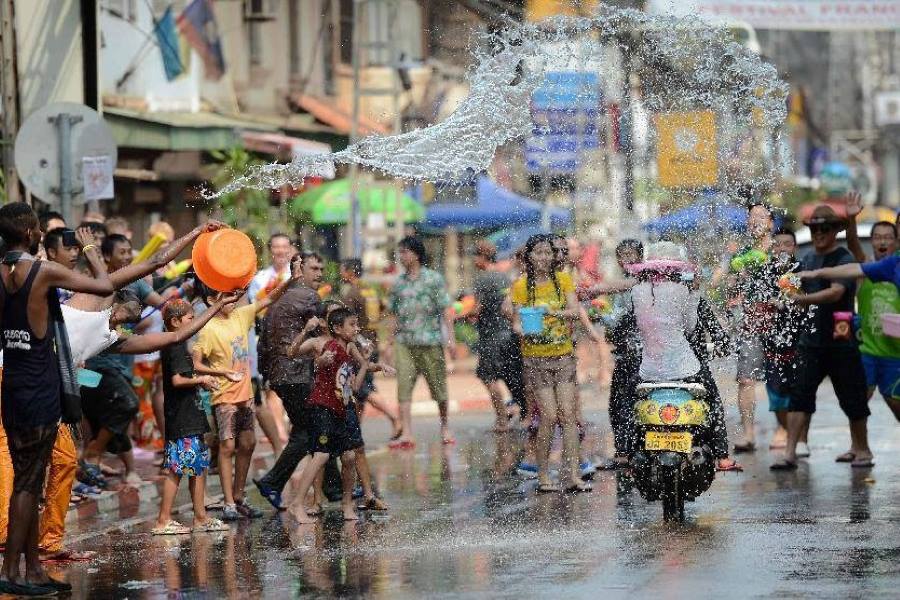
The capital of Laos hosts many other major traditional festivals (Cre: Tap chi Viet - Lao)
This is a sacred and fascinating land, offering visitors new experiences in the peaceful rhythm of Laos. Visitors have the opportunity to enjoy local specialties and explore new places, contributing to a wonderful travel experience.
Plan your trip and discover the unique capital of Laos!
Read more: Laos tours 10 days
Embark on Luang Prabang Vientiane Tour 5 Days: Modern and Ancient Beauty of Laos...
Immerse yourself in the enchanting beauty of Luang Prabang and Asia King Travel'...
Immerse yourself in the pristine wilderness of Vientiane Tour 5 Days: Natural Be...
Discover the enchanting capital of Laos on Vientiane Tour 2 Days: Cultural Highl...
Embark on this Vientiane Tour 3 Days: Explore the Sacred Land in Vientiane, the...